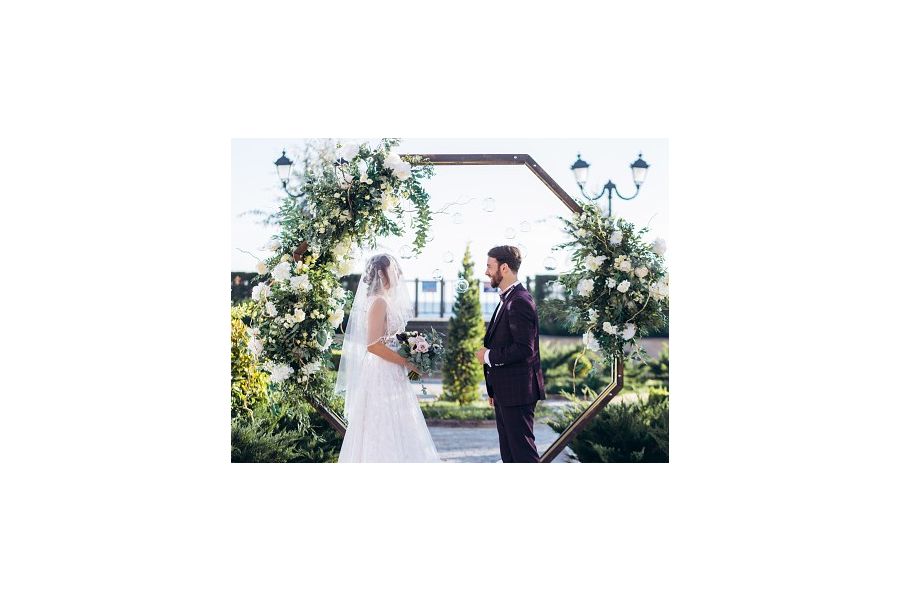Sustainable wedding flowers

There’s a saying in the wedding industry that you can only take two things with you from your wedding – your spouse and the photos. While this may be a bit of an exaggeration, it does speak to the waste that comes with one-off events like weddings.
In fact, according to one estimate, the average wedding in the U.S. produces 400 pounds of garbage and 63 tons of CO2 emissions. And one of the biggest culprits is also the most beautiful part of the wedding: the flowers.
Luckily for Mother Earth, though, couples can take plenty of proactive steps to keep their event eco-friendly without skipping floral décor entirely.
1. Shop Local
“One of the main ways to be conscious of the environment and sustainability is to work with your local farmers,” says Christopher Vazquez, event design principle for Amaryllis Floral and Event Design in Maryland.
This not only helps avoid excess emissions and waste from transporting flowers from across the country, but it also has the bonus of supporting your local economy.
2. Stay in Season
Similarly, seasonality is another key factor to consider when selecting your blooms if you want to stay sustainable. For example, while peonies are a popular choice for weddings year-round, they aren’t in season in the Mid-Atlantic in August and would have to be flown in all the way from Alaska, explains Vazquez.
3. Hire an Eco-Friendly Florist
“It’s good to interview your vendor and understand their perspective, what they bring to the plate with conservancy and eco-smarts and sustainability,” says Vazquez.
When interviewing potential florists, Vazquez suggests asking questions about their practices, such as:
• What’s your mission statement on the environment?
• Do you partner with any environmentally friendly organizations?
• Do you work with local farmers? If so, which ones specifically?
• What is your design process like when it comes to waste? Do you compost?
4. Decorate with Potted Plants
Instead of decorating exclusively with cut flowers, which will quickly die, consider incorporating potted plants like trees, shrubs, ornamental grasses, and perennials.
“These will live on long after your ceremony, and they are fabulous thank-you gifts for the wedding party and family members who can plant them at home in memory of your wedding day,” says Debra Prinzing, a Seattle-based writer, speaker and leading advocate for American-grown flowers.
5. Keep Things Simple
Of course, the easiest way to reduce the carbon footprint of your event is to literally cut down on the amount of flora and fauna that you use.
“More isn't necessarily better,” says Prinzing. “Opt for a petite bouquet or a delicate hairpiece or crown” rather than lush or overflowing arrangements.
6. Skip Plastic Packaging
It’s not just the organic materials that can be a sustainability issue for wedding flowers; it’s also the materials they come in. So, be sure to ask your florist to avoid using plastics when designing your wedding.
“This includes vessels and it especially addresses floral foam – the green brick of foam used to stabilize flower stems inside a vase,” explains Prinzing. “This is definitely a product that will end up in a landfill after your ceremony and it is not eco-friendly at all. Florists are increasingly using alternative methods to design and stabilize stems.”
7. Rent and Repurpose
Another effective way to reduce waste – and cut costs – is to rent décor whenever possible. Talk to your florist, venue or rental company about borrowing vases, plant stands, lanterns and other accessories before you go out and buy something entirely new.
You can also get creative when reusing arrangements and accessories from the ceremony for the reception, suggests Prinzing.
“Reuse and repurposing are growing concepts in weddings as people are concerned about the cost and waste that ceremonies produce,” she adds.
8. Donate Your Arrangements
It’s also becoming increasingly popular for couples to donate their floral arrangements to a good cause after the wedding, thus extending the plants and flowers' lives.
For example, Amaryllis Floral and Event Design frequently partner with Petals for Hope to re-use their flowers in the local community.
“They are an organization that pick up the flowers after an event and then reuse the flowers either for a seminar for children or the elderly or redesign them and take them to the hospital. So, the flowers are getting an extra run and they’re also going to a good cause,” says Vazquez.